
Edo Murtić was a painter from Croatia, best known for his lyrical abstraction and abstract expressionism style. He worked in a variety of media, including oil painting, gouache, graphic design, ceramics, mosaics, murals and theatrical set design. Murtić travelled and exhibited extensively in Europe and North America, gaining international recognition for his work, which can be found in museums, galleries and private collections worldwide. He was one of the founders of the group "March" (Mart) in 1956, and received many international awards. In 1958 Murtić participated in the three biggest events in the world of contemporary art: the Venice Biennale, the Carnegie Prize in Pittsburgh, and Documenta in Kassel. Interest in the art of Edo Murtić continues to grow, with retrospective exhibits in major museums.
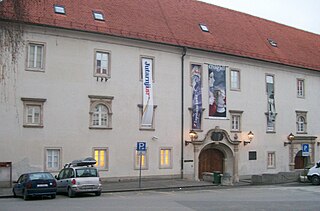
Klovićevi Dvori Gallery is an art gallery in Zagreb, Croatia. Opened in 1982, the gallery is named after the 16th century Croatian-born artist Juraj Julije Klović, considered to be one of the greatest manuscript illuminators of the Italian Renaissance.

Dimitrije Popović is an eminent Montenegrin and Croatian painter, sculptor, art critic and philosopher born in Cetinje, Montenegro. He attended elementary and high school in his hometown and graduated from the Academy of Fine Arts in Zagreb in 1976 in the class of professor Šime Perić.

Croatian art of the 20th century, that is visual arts within the boundaries of today's Croatia, can be divided into modern art up to the Second World War, and contemporary art afterwards.
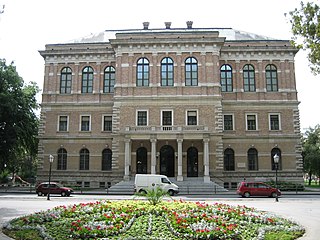
The Strossmayer Gallery of Old Masters is a fine art museum in Zagreb, Croatia exhibiting the collection donated to the city by Bishop Josip Juraj Strossmayer in 1884. Located at 11 Nikola Šubić Zrinski Square, it forms part of the Croatian Academy of Sciences and Arts.
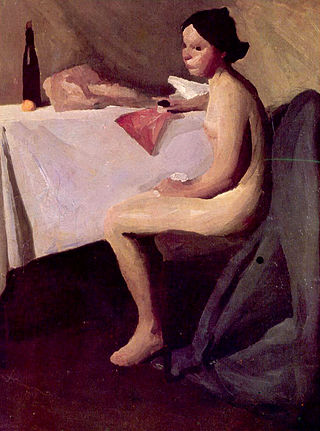
Vladimir Becić (1886–1954) was a Croatian painter, best known for his early work in Munich, which had a strong influence on the direction of modern art in Croatia.
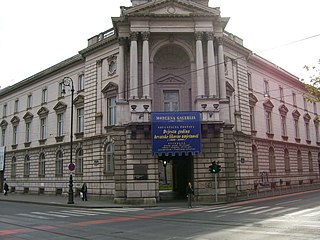
Modern Gallery is a museum in Zagreb, Croatia that holds the most important and comprehensive collection of paintings, sculptures and drawings by 19th and 20th century Croatian artists. The collection numbers around 10,000 works of art, housed since 1934 in the historic Vranyczany Palace in the centre of Zagreb, overlooking the Zrinjevac Park. A secondary gallery is the Josip Račić Studio at Margaretska 3.

Mato Celestin Medović was a Croatian painter. Best known for his large paintings depicting historical scenes, and his series of colourful landscapes and seascapes of his native Dalmatia, Medović is one of the earliest modern Croatian painters.
The Filip Trade Collection is a large private collection of contemporary Croatian art. The collection is a subsidiary of Filip Trade, a distribution company with its offices located in the capital city of Croatia, Zagreb. The offices and collection are currently undergoing a move and will soon be relocated in a purpose built venue in the Črnomerec district of Zagreb, Croatia. The collection was founded in the nineties with the acquisition of the Drystone Walls graphic by artist Oton Gliha, an acquisition suggested by the Croatian art critic and connoisseur Radovan Beck. Nowadays, the collection holds works of Croatian artists created from the 1950s, up to today. The earliest piece in the collection dates back to 1949 and is the bronze sculpture Bara with a Chicken by the Croatian sculptor Ivan Kožarić.

Emanuel Božidar Vidović was a Croatian painter and graphic artist from Split.
Jerolim Miše, was a Croatian painter, teacher, and art critic. He painted portraits, still lifes and landscapes of his native Dalmatia. A member of the Group of Three, Group of Four, and the Independent Group of Artists.
Nina Ivančić was born in 1953 in Zagreb, Croatia. She is a contemporary Croatian artist working mainly in the mediums of painting and drawing.
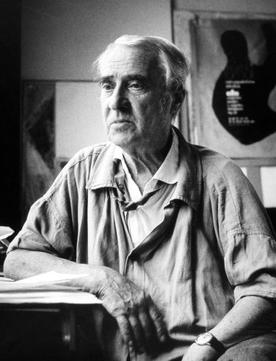
Marino Tartaglia was a Croatian painter and art teacher, for many years a professor at the Academy of Fine Arts, Zagreb.
Tomislav Krizman (1882–1955), was a Croatian painter, graphic artist, costume and set designer, teacher, author and organizer of cultural events. He painted in oils and tempera, although he is principally remembered for his remarkable graphic art.
Zlatko Šulentić was a Croatian painter of landscapes and portraits.

Ignjat "Ignjo" Job was an important representative of colour expressionism in the art scene of Yugoslavia during the 1930s. Job's landscapes of Dalmatia are reminiscent of the style of Van Gogh. He is best known for his series of paintings inspired by life on the island of Brač. Job said that “the beneficial influence of the Brač landscape can be felt, the hot sun, blue sea, and green branches of olive trees swayed by the breath of the maestral”. His paintings depicted the Mediterranean landscape, motifs of the town of Supetar, fishing themes, and more rarely portraits and nudes.
Branislav Dešković (1883–1939) was a Croatian sculptor, best known for his expressive animal sculptures, especially his hunting dogs. He is considered the first Impressionist sculptor in Croatia.
Oton Postružnik (1900–1978) was a Croatian artist, painter, graphic artist, and ceramist. He was one of the founding members of the Earth Group artist collective in Zagreb from 1929 to 1933. He studied in Zagreb, Prague and Paris, and was a professor at the Academy of Fine Arts in Zagreb from 1950 to 1970. He is best known for his abstract paintings of natural subjects, such as his Leaf series.
Branko Ružić was a prominent Croatian painter, sculptor and professor at the Academy of Fine Arts, Zagreb.

Salon Galić is Split's oldest exhibition space, located in the heart of the town on Marmont Street 3. It was founded by Hrvace-born artisan Ivan Galić in May 1924 and was the only art gallery in Split during the interbellum.














